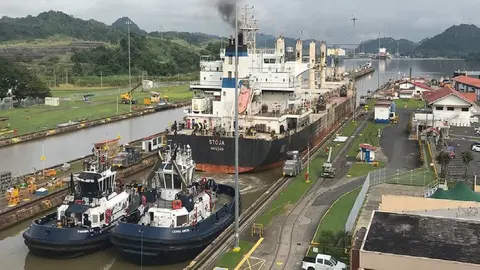Trump: Panama Canal and Greenland

Following this script, in the 20th century they tried to buy Greenland from the Danes, a territory coveted since 1867, with an area of 2,166,000 km2. One of the largest islands in the world, 75% of its territory is covered by ice cover, but of great strategic importance to the United States in terms of wealth, security and strategic defence due to its geographic location.
Its strategic importance for dominating the maritime routes linking the Pacific, Arctic and Atlantic oceans led President Donald Trump, in his first administration and now a few days before returning to the presidency, to insist once again on buying Greenlandic territory.
On that occasion, in Trump's first administration, the then Danish prime minister, Mette Frederiksen, said that Greenland was not for sale, but was open to trade and cooperation with other countries, including the United States. Again, the Danish authorities have reiterated that Greenland is not for sale.
Greenland has been a strategic territory coveted by the United States for 157 years, the preponderance of which has increased since World War II and was further accentuated during the Cold War because it is a strategic territory for military operations and global dominance.
For this reason, former US President Harry Truman proposed to the Danish government to buy it in 1946, but it refused. Five years later, they signed a treaty that allowed the US to build the Thule military base near the Russian domain.
Greenland is located at the most strategic crossroads of the Arctic Ocean, one of the regions that in recent years has been the scene of bitter border disputes between five countries on three continents that share boundaries in the region. The Arctic Pole during the Cold War was the focus of military experiments by the United States and the former Soviet Union, now it is again the theatre of military operations by the United States, Russia, Denmark, Canada and Norway. All as a result of discoveries of large oil and gas deposits.
A study by the United States Geological Survey revealed that the region holds 25-30% of the world's unexplored oil and gas reserves. This has led to increasing border conflicts between the countries that share borders in the region.
In addition to the border disputes between the countries that share borders, the strategic interests of powers such as France, Britain and China have their sights set on the region's riches and are seeking mechanisms to gain access to control of the maritime routes.
The United States, Canada, Denmark, Norway and Russia are developing projects to build military bases and deploy military forces to defend their strategic domains. The US and Russia have military units in the area to defend their geostrategic interests, as do Canada, Denmark and Norway.
Despite the fact that Russia and Norway signed a maritime delimitation agreement, which ended their moratorium on the exploitation of hydrocarbon deposits on the continental shelf, the agreement did not mean the end of the moratorium on the exploitation of hydrocarbon deposits on the continental shelf. This agreement did not mean the end of disputes in the region, as the United States and Canada continue to dispute over the Beaufort Sea, Canada and Denmark over some islets, and Russia and the United States over the strip of land separating Alaska from Siberia.
Trump's idea of making Canada a vassal state of the United States is certainly not a far-fetched idea. Nor is taking back control of the Panama Canal. It is all part of his government's new neo-Monroist geopolitical and geostrategic doctrine of strategic US dominance from the Arctic to Antarctica.
For, for the United States, in addition to those Arctic rivalries, they are also vying for control of the sea lanes that narrow the crossings between the United States, Europe, China and Japan. The northeast route is contested by Russia and Norway, and the northwest route is fought over by the United States, Canada and members of the European Union. The importance of these routes is that, as the thaw accelerates and mining exploration proceeds, they are vital for world trade by virtue of the fact that the distance between New York and Tokyo is reduced by 23%.
Routes that will not only cut distances, but also freight costs, as they will be cheaper than using the Panama and Suez Canal routes. Routes that will become China's new gateway to Europe, because in the summer season the Shanghai-Hamburg route would be reduced by 8,600 kilometres. Trump's proposal to buy Greenland is not a far-fetched idea, it is part of a new US foreign policy doctrine to confront the powerful alliance of Asian powers Russia and China for control of the new world order.
@j15mosquera



